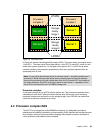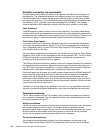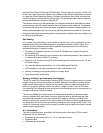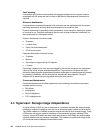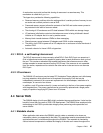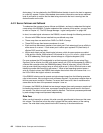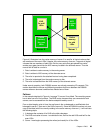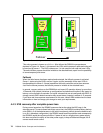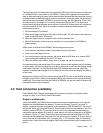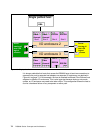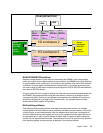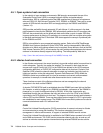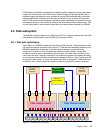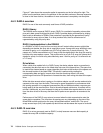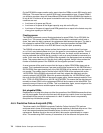Chapter 4. RAS 71
The single purpose of the batteries is to preserve the NVS area of server memory in the event
of a complete loss of input power to the DS8000. If both power supplies in the base frame
were to stop receiving input power, the servers would be informed that they were now running
on batteries and immediately begin a shutdown procedure. Unless the power line disturbance
feature has been purchased, the BBUs are not used to keep the disks spinning. Even if they
do keep spinning, the design is to not move the data from NVS to the FC-AL disk arrays.
Instead, each processor complex has a number of internal SCSI disks which are available to
store the contents of NVS. When an on-battery condition related shutdown begins, the
following events occur:
1. All host adapter I/O is blocked.
2. Each server begins copying its NVS data to internal disk. For each server, two copies are
made of the NVS data in that server.
3. When the copy process is complete, each server shuts down AIX.
4. When AIX shutdown in each server is complete (or a timer expires), the DS8000 is
powered down.
When power is restored to the DS8000, the following process occurs:
1. The processor complexes power on and perform power on self tests.
2. Each server then begins boot up.
3. At a certain stage in the boot process, the server detects NVS data on its internal SCSI
disks and begins to destage it to the FC-AL disks.
4. When the battery units reach a certain level of charge, the servers come online.
An important point is that the servers will not come online until the batteries are fully charged.
In many cases, sufficient charging will occur during the power on self test and storage image
initialization. However, if a complete discharge of the batteries has occurred, which may
happen if multiple power outages occur in a short period of time, then recharging may take up
to two hours.
Because the contents of NVS are written to the internal SCSI disks of the DS8000 processor
complex and not held in battery protected NVS-RAM, the contents of NVS can be preserved
indefinitely. This means that unlike the DS6000 or ESS800, you are not held to a fixed limit of
time before power must be restored.
4.5 Host connection availability
Each DS8000 Fibre Channel host adapter card provides four ports for connection either
directly to a host, or to a Fibre Channel SAN switch.
Single or multiple path
Unlike the DS6000, the DS8000 does not use the concept of preferred path, since the host
adapters are shared between the servers. To show this concept, Figure 4-5 on page 72
depicts a potential machine configuration. In this example, a DS8100 Model 921 has two I/O
enclosures (which are enclosures 2 and 3). Each enclosure has four host adapters: two Fibre
Channel and two ESCON. I/O enclosure slots 3 and 6 are not depicted because they are
reserved for device adapter (DA) cards. If a host were to only have a single path to a DS8000
as shown in Figure 4-5, then it would still be able to access volumes belonging to all LSSs
because the host adapter will direct the I/O to the correct server. However, if an error were to
occur either on the host adapter (HA), host port (HP), or I/O enclosure, then all connectivity
would be lost. Clearly the host bus adapter (HBA) in the attached host is also a single point of
failure.



